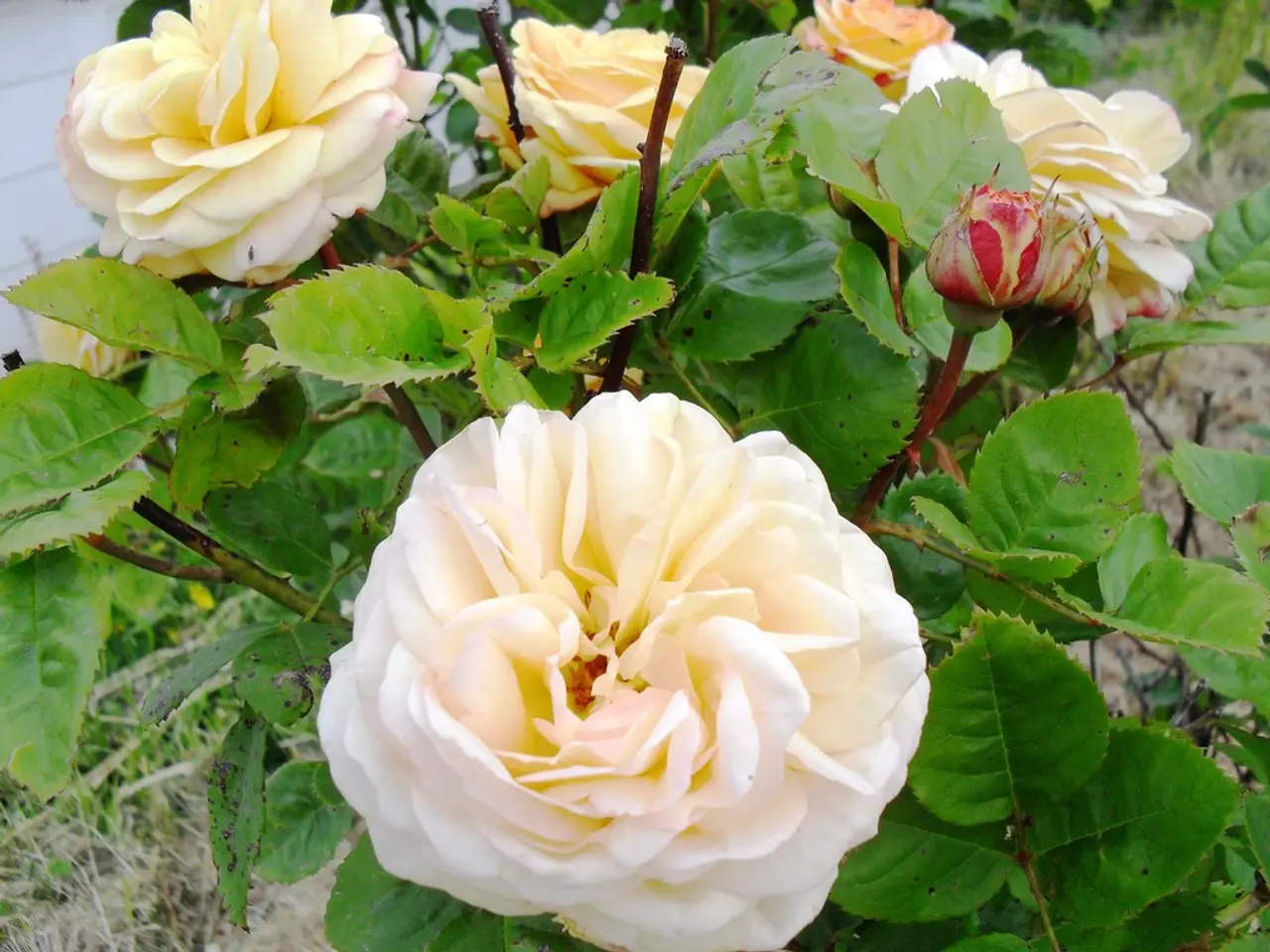Strategies for Controlling Persistent Grass Weeds in Your Garden and Yardspace
In the world of gardening, perennial grassy weeds can be a persistent challenge for vegetable growers and annual flower bed enthusiasts alike. However, armed with the right knowledge and techniques, these weeds can be effectively managed without compromising the health of crops or soil.
The battle against perennial grassy weeds requires persistence throughout the entire growing season, as these weeds can regrow from roots left in the soil. The key to successful control lies in a combination of hand-pulling and digging, mulching, and, when appropriate, herbicide use.
Hand-pulling and digging are essential for perennial weeds. It's crucial to remove the entire root system to prevent regrowth. Digging out perennial weeds with a garden knife or similar tool is recommended, especially for weeds growing close to vegetable plants to avoid damaging crops. After digging, removed weeds should be placed in a plastic bag and left in the sun to kill any seeds before composting, preventing further spread. Hoeing the topsoil can also control small, young weeds, but is limited for perennials, which may resprout from roots if not fully removed.
Mulching is one of the most effective non-chemical ways to prevent weed growth. Organic mulches such as bark, dried leaves, cardboard, or newspapers block light, inhibit weed seed germination, and improve soil structure and nutrient content over time. Mulch should be applied thickly enough to smother weeds and keep the soil cool and moist, reducing evaporation and discouraging weed establishment. Consistent mulching can deplete the weed seedbank over several years.
For tough perennial grassy weeds, spot-treating with non-selective herbicides on actively growing weeds in midsummer is effective. Spray the weed patches and a buffer area to ensure complete kill. A second application may be necessary if weeds persist after 2–4 weeks. After complete destruction, areas can be reseeded or sodded after about a week. Combining digging with herbicide application can minimize herbicide use: dig out as much as possible, wait for regrowth, then treat the regrowth with herbicide.
Integrating these methods—thorough digging and pulling, applying mulch consistently, and judicious use of herbicides—can effectively control perennial grassy weeds in vegetable gardens and garden beds while protecting your crops and soil health. By understanding the life cycle and characteristics of these weeds, gardeners can develop a tailored approach to keep their gardens weed-free and thriving.
For a clearer understanding of the methods and their suitability, refer to the following summary table:
| Method | Description & Tips | Suitability | |-----------------|----------------------------------------------------------------|-----------------------------------------| | Pulling & Digging | Remove entire roots manually, dig perennials carefully. Bag and solarize removed weeds. Hoeing for small weeds. | Best for small areas and close to crops | | Mulching | Apply thick organic mulch (bark, leaves, cardboard) to block light, improve soil, and suppress weeds long-term | Effective for all garden beds | | Herbicides | Spot-treat actively growing weeds with non-selective herbicides mid-summer; may need repeat application. Combine with digging for best results | Use cautiously in vegetable gardens; spot-treat only |
With this comprehensive guide, you're now equipped to tackle perennial grassy weeds in your vegetable garden and garden beds, ensuring a healthy, thriving, and weed-free growing season.
- Persistent challenges in gardening include perennial grassy weeds, which can grow back from roots left in the soil despite the growing season.
- Effective control of perennial weeds involves a combination of hand-pulling and digging, mulching, and herbicide use under appropriate circumstances.
- For weeds growing near vegetable plants, carefully use a garden knife or similar tool to dig out the entire root system to avoid damaging crops.
- Mulching with organic materials such as bark, dried leaves, cardboard, or newspapers can prevent weed growth by blocking light and improving soil structure.
- In cases of tough perennial grassy weeds, spot-treating with non-selective herbicides in midsummer, followed by a wait and reseeding or sodding, can also be effective.





